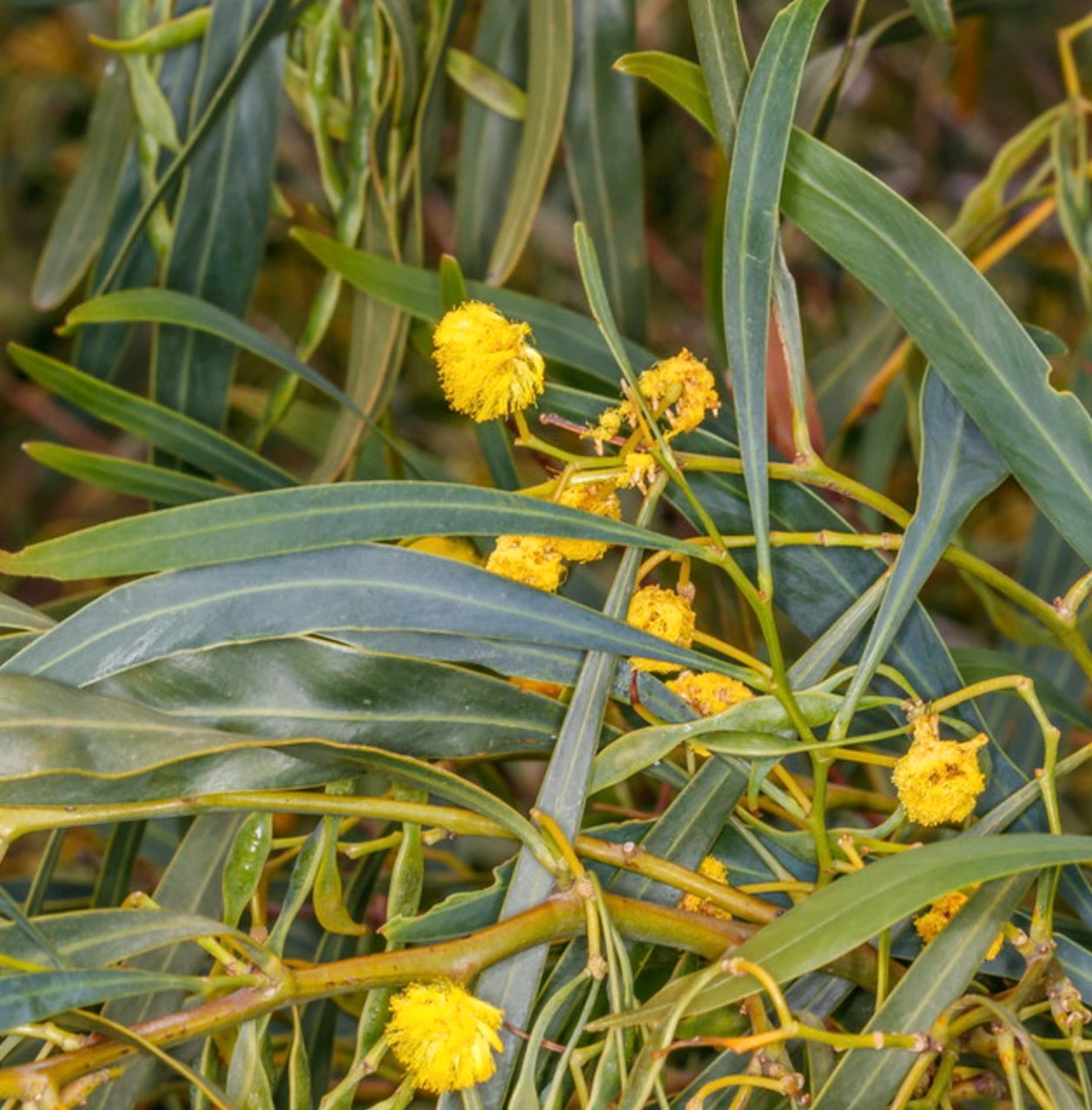Acacia saligna, commonly known as the Golden Wattle or Blue-leaf Wattle, is a species of acacia tree native to Australia. It is one of the many species of acacia that are known for their distinctive yellow flowers. Here are some key characteristics and information about Acacia saligna:
-
Appearance: Acacia saligna is a small to medium-sized evergreen tree that can grow up to 15 meters (50 feet) tall. Its branches are often pendulous, giving it a weeping appearance. The leaves are typically blue-green and have a narrow, willow-like shape, hence the name "saligna" (from the Latin word for willow).
-
Flowers: The tree produces bright yellow, ball-shaped flower clusters that are highly conspicuous and fragrant. The flowers are rich in nectar and attract pollinators like bees and birds.
-
Seed Pods: After flowering, Acacia saligna forms seed pods that are twisted and coiled in shape. These pods contain seeds that can be released when the pods dry and split open.
-
Invasive Species: While Acacia saligna is native to Australia, it has become an invasive species in some regions, particularly in parts of South Africa and Western Australia. In these areas, it can outcompete native vegetation and disrupt local ecosystems.
-
Uses: In its native range, Acacia saligna has several practical uses. It has been used for erosion control and land reclamation due to its ability to stabilize soil with its extensive root system. It is also used as a source of firewood and for making fences.
-
Cultural Significance: The Golden Wattle is the national floral emblem of Australia and is a symbol of the country. It is celebrated on National Wattle Day, which is observed on September 1st each year in Australia.
It's worth noting that when introducing non-native plant species to new areas, careful consideration should be given to their potential to become invasive and disrupt local ecosystems. In some regions where Acacia saligna has become invasive, efforts are made to manage and control its spread to protect native flora and fauna.


